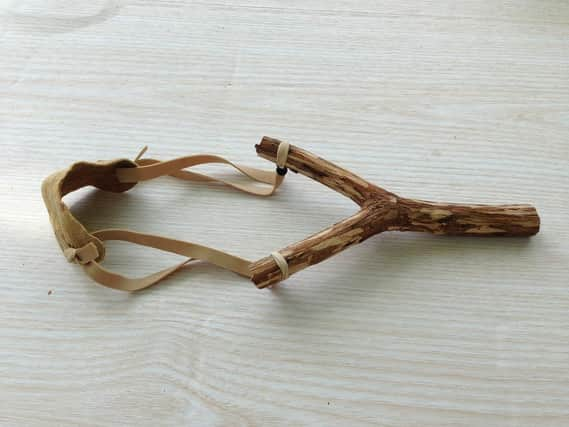RICHARD ORD: The future of space travel is full of wonder… and spelks!


I have to concede it’s far more environmentally-friendly than the ugly metal satellites currently in orbit above our heads, but the ‘green’ argument kinda falls down a bit when you consider how they aim to get these timber devices into space. A small matter of burning up 15,000 gallons of rocket fuel a second.
If that’s their idea of saving the planet, I’m not sure my recycling of wine bottles and cardboard boxes is going to help keep polar bears on ice flows any longer than hoped.
Still it’s the thought that counts.
Advertisement
Hide AdAdvertisement
Hide AdMaybe, in the future, space agencies will rethink their carbon footprint and, like the Japanese, look at greener engineering. Instead of using fuel-guzzling rockets, why not propel their wooden satellites into space with giant catapults?
Now that would be some feat of engineering and worth paying to see. Okay, so launch day may lack the explosive roar and retina-sizzling adrenaline rush of a Cape Canaveral blast off, but wouldn’t it have a majestic beauty all of its own?
While I haven’t fully calculated the figures yet (I only have ten fingers, remember), I imagine you’ll need a Y-shaped catapult as high as the Empire State Building, whittled from a forest of Canadian Redwoods, as your main satellite launching structure.
In keeping with the ‘green’ theme, the elastic band propulsion system could be fashioned from the billions of elastic bands discarded on the streets by posties. Again, having only achieved a grade B in O-level physics (after a re-sit), my calculations for the size of the rubber band are mainly guesswork, but I reckon it’d need to be a mile and a bit long and about as thick as a standard kitchen refrigerator (I think a square band rather than tubular would provide more stability).
Advertisement
Hide AdAdvertisement
Hide AdUsing a team of, give or take, 8,000 elephants, bison and other large mammals (I could have gone for just cows, but exotic animals add to the spectacle don’t you think?) it would take about two hours to pull the elastic to the right tension for launch (a distance of about a mile and a half, I reckon).
Nestle the timber satellite carefully in a wicker basket (I say carefully, as I’m sure these timber satellites will pose spelk and splinter risks for launch teams as well as being a fire hazard) and prepare for countdown.
Five, four, three, two, one… TWANG!
You’ve been given a glimpse of the world to come. Remember, you read it here first…
